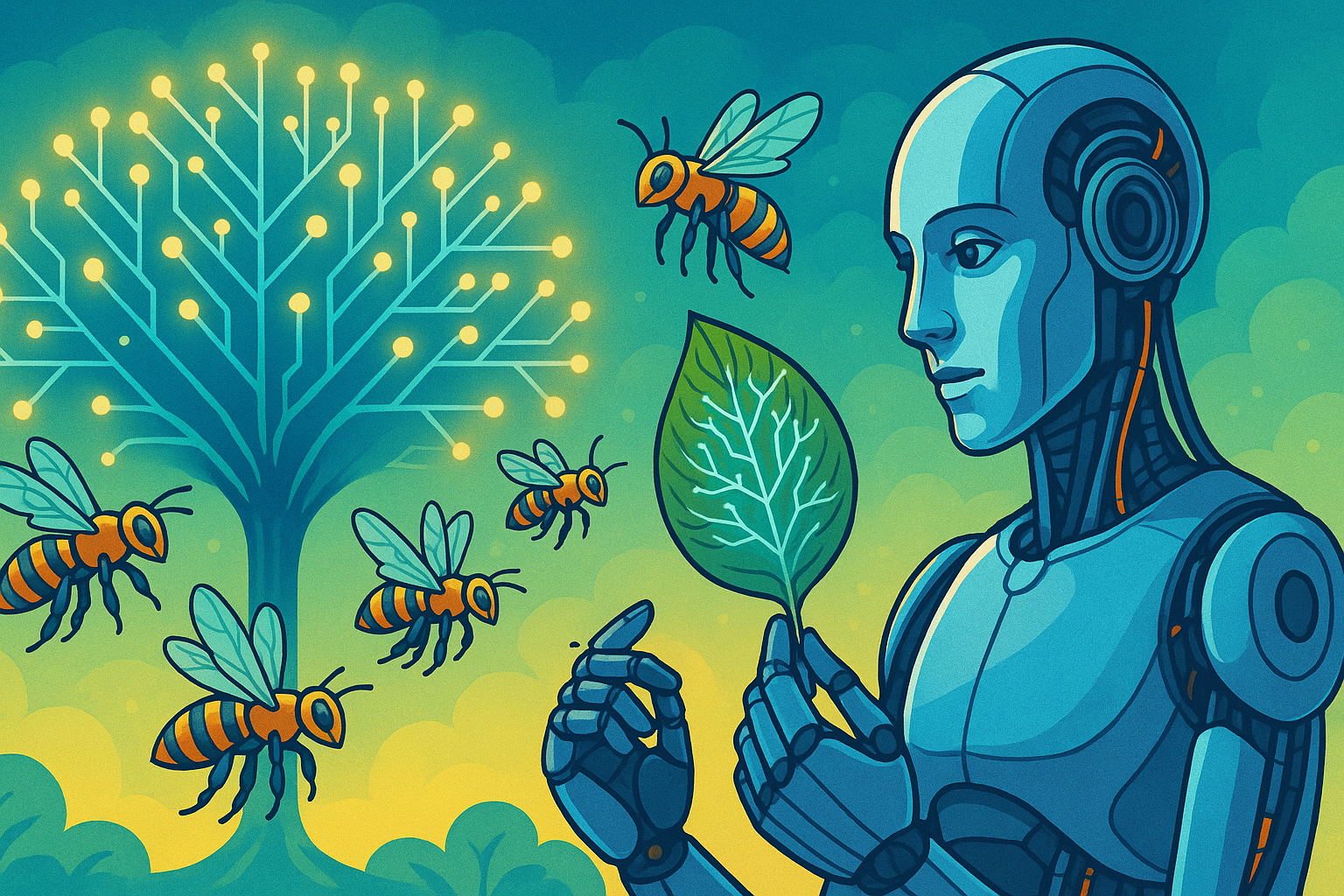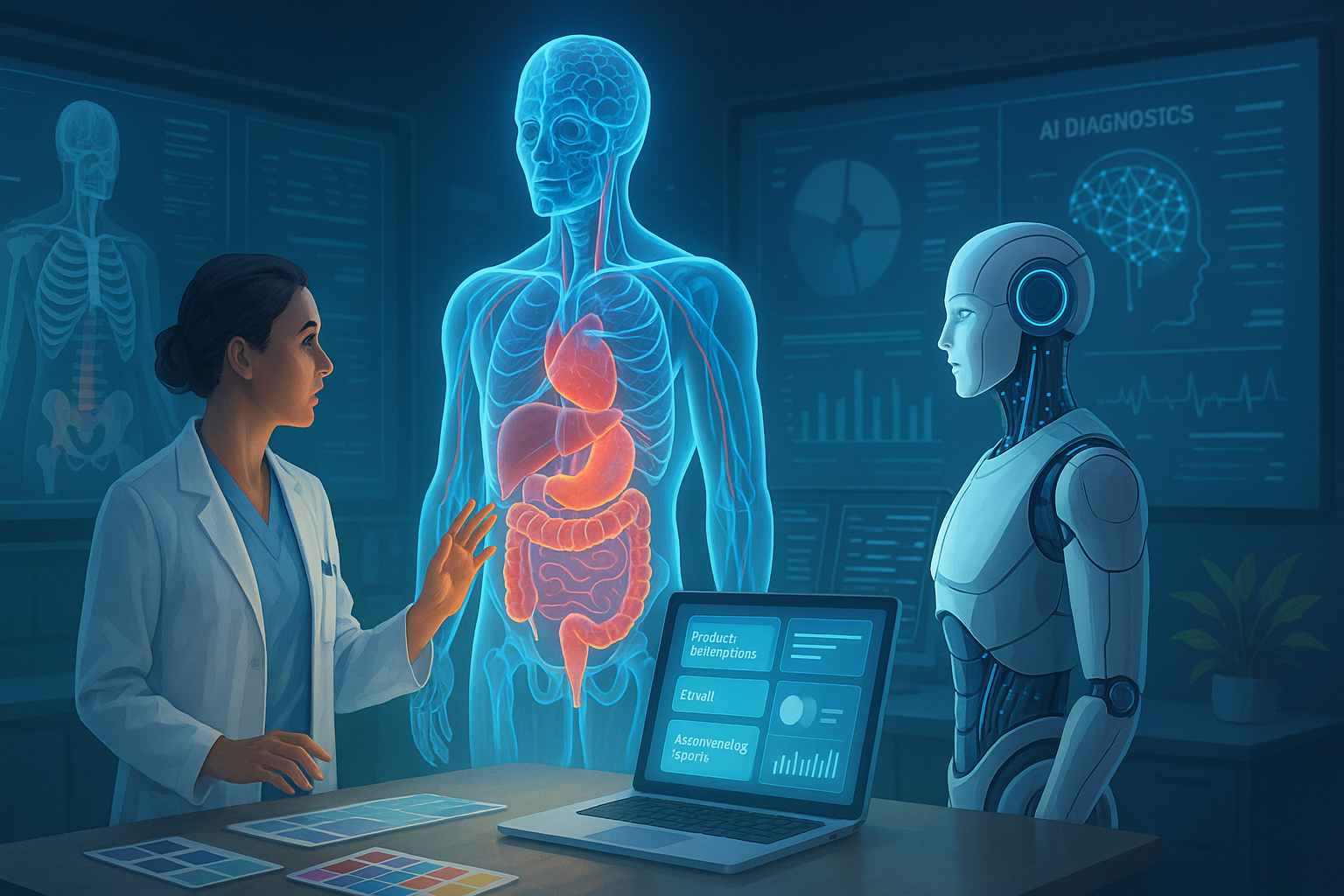How AI Can Mimic Nature’s Design

The Power of Biomimicry and AI
Nature has spent billions of years perfecting efficient, resilient, and adaptive designs. Today, artificial intelligence (AI) is learning from this vast repository of wisdom to solve some of humanity’s most complex challenges. By studying biological processes and systems, AI researchers are developing innovative algorithms and technologies that mimic the remarkable capabilities found in the natural world. This article explores how AI draws inspiration from nature, the principles behind biomimicry, and real-world applications transforming industries.
Foundations of Biomimicry
What Is Biomimicry?
Biomimicry is the practice of emulating nature’s strategies to solve human problems. Coined by biologist Janine Benyus, the concept emphasizes learning from and respecting nature rather than simply extracting resources. From the structure of a bird’s wing inspiring airplane design to the microscopic hooks on burrs leading to Velcro, biomimicry reveals how nature’s time-tested solutions can guide technological breakthroughs.
Key Principles of Nature-Inspired Design
Biomimicry relies on several core principles, including:
- Emulating nature’s models, systems, and processes
- Using sustainable and efficient strategies
- Creating adaptive, resilient designs
These principles help ensure that innovations are not only effective but also environmentally responsible.
Historical Examples of Learning from Nature
Humans have long looked to nature for inspiration. Ancient Greeks studied bird flight, Leonardo da Vinci sketched mechanical wings, and modern engineers analyzed shark skin to develop drag-reducing surfaces. Today, AI extends this tradition by encoding biological insights into algorithms that can learn, adapt, and evolve.
AI as a Tool for Emulating Nature
Machine Learning Algorithms Inspired by Biological Processes
Many machine learning techniques are rooted in biological concepts. For instance, artificial neural networks were modeled after the interconnected neurons of the human brain. Evolutionary algorithms simulate natural selection by iteratively improving solutions over generations. These bio-inspired approaches allow AI systems to tackle problems with flexibility and creativity similar to living organisms.
Neural Networks and the Human Brain
Neural networks consist of interconnected nodes that process information in layers, much like neurons firing electrical signals. Deep learning, a subset of machine learning, uses multi-layered neural networks to recognize patterns in massive datasets, enabling breakthroughs in image recognition, speech processing, and autonomous driving.
Evolutionary Algorithms and Natural Selection
Evolutionary algorithms mimic Charles Darwin’s theory of evolution. They start with a population of potential solutions and apply processes like mutation, crossover, and selection to evolve better solutions over time. This approach has been used to optimize everything from industrial processes to robotic behaviors, demonstrating the power of nature-inspired problem-solving.
Swarm Intelligence
Mimicking Insect Colonies
Swarm intelligence draws inspiration from the collective behavior of social insects like ants, bees, and termites. Individually, these creatures have limited capabilities, but together, they solve complex problems such as foraging, nest building, and defense. AI researchers replicate these decentralized strategies to develop algorithms that can coordinate large numbers of simple agents to achieve sophisticated goals.
Applications in Optimization and Robotics
Swarm algorithms have been applied to optimize network routing, resource allocation, and scheduling problems. In robotics, swarms of small drones or robots can collaboratively explore environments, perform search-and-rescue missions, and monitor ecosystems, all without centralized control.
Case Study: Ant Colony Optimization
Ant Colony Optimization (ACO) is an algorithm inspired by how ants find the shortest paths to food. Virtual “ants” deposit digital pheromones on paths they explore, reinforcing successful routes over time. ACO has been used to tackle complex optimization problems in logistics, telecommunications, and manufacturing.
Deep Learning and Visual Perception
How AI Learns to See Like Animals
Deep learning models, especially Convolutional Neural Networks (CNNs), have revolutionized computer vision by mimicking the visual processing mechanisms of animal brains. These networks learn to detect edges, shapes, and patterns in images, much like how animals interpret visual information to navigate their environments.
Convolutional Neural Networks Inspired by Visual Cortex
CNNs were designed to simulate the hierarchical structure of the mammalian visual cortex, where neurons respond to increasingly complex visual features. This architecture allows AI systems to recognize faces, objects, and scenes with remarkable accuracy.
Applications in Medical Imaging and Environmental Monitoring
Nature-inspired visual perception has led to breakthroughs in medicine, where AI models can detect tumors and diagnose diseases from scans with expert-level precision. In environmental science, AI-powered image analysis helps track deforestation, monitor wildlife, and assess ecosystem health.
Reinforcement Learning and Animal Behavior
Learning by Trial and Error
Reinforcement learning algorithms emulate how animals learn through trial and error. An AI agent interacts with its environment, receiving rewards or penalties based on its actions, gradually improving its behavior to maximize cumulative rewards.
Examples in Robotics and Game Playing
Reinforcement learning has powered some of the most impressive AI achievements, including DeepMind’s AlphaGo, which defeated human champions in the complex board game Go. In robotics, reinforcement learning enables machines to learn tasks like walking, grasping objects, or balancing in dynamic settings.
Lessons from Animal Adaptation
By studying how animals adapt to changing conditions, researchers design reinforcement learning systems that are more robust and flexible. This approach paves the way for AI that can handle uncertainty and thrive in real-world environments.
Natural Language Processing and Human Communication
Understanding and Generating Language
Natural Language Processing (NLP) draws inspiration from how humans learn language, communicate, and derive meaning. Modern NLP models process and generate text by learning patterns in human language data, enabling applications such as translation, summarization, and sentiment analysis.
Mimicking Social Learning Processes
AI systems like large language models are trained on vast corpora, much like children learning language by listening and observing. This exposure enables them to capture nuances of grammar, context, and tone, making them effective at generating human-like responses.
Chatbots and Conversational AI
Conversational AI has evolved rapidly, with chatbots now capable of answering questions, assisting customers, and even providing mental health support. By emulating social learning and communication behaviors, these systems can build rapport and improve user engagement.
Generative Design Inspired by Evolution
Designing Structures Like Nature
Generative design harnesses AI algorithms that mirror evolutionary processes to develop innovative solutions. By setting design goals and constraints, AI explores countless iterations, gradually evolving structures optimized for performance and efficiency—just as nature refines forms over generations.
AI in Architecture and Material Science
In architecture, generative design produces building layouts that maximize natural light and airflow. In material science, AI-driven simulations help create lightweight, strong materials inspired by natural composites like bone or coral.
Sustainability Benefits
Nature-inspired generative design promotes sustainability by reducing waste, optimizing resource use, and creating products that align with ecological principles. These advances contribute to more responsible manufacturing and environmental stewardship.
Robotics and Bionics
Bio-Inspired Robots
Robotics engineers often look to animals for inspiration when developing machines that can move fluidly and adapt to complex terrains. For example, Boston Dynamics’ quadruped robots emulate the balance and agility of mammals.
Soft Robotics Imitating Natural Movement
Soft robotics draws on the flexibility and adaptability of organisms like octopuses and worms. These robots use compliant materials to navigate tight spaces and perform delicate tasks, opening new possibilities in medical procedures and exploration.
Prosthetics and Exoskeletons
Advanced prosthetics and exoskeletons mimic natural biomechanics to restore or enhance human movement. AI-powered control systems enable devices to interpret neural signals and adjust dynamically, improving mobility and quality of life for users.
Artificial Life and Simulation
Digital Organisms and Ecosystems
Artificial life (A-Life) studies use AI to simulate biological processes in digital environments. Researchers create virtual organisms that evolve, adapt, and interact like real ecosystems, providing insights into complex systems and evolutionary dynamics.
Studying Complex Systems with AI
AI models replicate interactions among species, resource cycles, and environmental factors. These simulations help scientists understand biodiversity, disease spread, and ecosystem resilience—knowledge essential for conservation and sustainability efforts.
Applications in Research and Education
Artificial life simulations also serve as powerful educational tools. They allow students and researchers to experiment with evolutionary principles, observe emergent behaviors, and explore the impact of environmental changes on virtual populations.
Ethical Considerations in Nature-Inspired AI
Balancing Innovation and Responsibility
While biomimetic AI offers immense promise, it raises ethical questions about unintended consequences and potential misuse. Responsible innovation requires thoughtful policies, transparent practices, and collaboration across disciplines to ensure AI serves humanity.
Potential Risks of Biomimetic Technologies
Swarm robotics could be repurposed for surveillance or warfare. Advanced simulation tools might inadvertently create harmful autonomous systems. Addressing these risks requires proactive governance and robust safeguards.
Preserving Natural Systems
Ironically, learning from nature can threaten it if resources are overexploited. Ethical biomimicry emphasizes sustainability, stewardship, and respect for the ecosystems that inspire technological progress.
Future Perspectives
How AI Will Continue to Learn from Nature
AI will increasingly harness biological strategies for adaptation, resilience, and creativity. As algorithms become more sophisticated, they will blur the line between natural and artificial systems.
Emerging Trends in Biomimetic AI
Trends such as neuromorphic computing, which replicates the structure of the brain, and biohybrid systems that combine living tissue with AI components, point to a future of deeper integration between biology and technology.
Collaborative Innovation Across Disciplines
The most impactful advances will arise from collaboration—biologists, engineers, ethicists, and policymakers working together to ensure AI development aligns with human values and planetary health.
Conclusion: Embracing Nature’s Wisdom for a Better Future
Nature has always been humanity’s greatest teacher. By embracing its lessons through AI, we can unlock transformative solutions to complex problems, design more sustainable technologies, and forge a future that honors both innovation and ecological balance. As we continue to blur the lines between the organic and the artificial, the wisdom of nature will remain our most vital guide.
Frequently Asked Questions
What is the difference between biomimicry and bio-inspired design?
Biomimicry involves directly emulating nature’s strategies, while bio-inspired design may be loosely influenced by natural concepts without fully replicating them.
How does swarm intelligence work in AI?
Swarm intelligence uses decentralized algorithms modeled after collective behaviors in insect colonies, enabling agents to collaborate without central control.
What are some real-world applications of nature-inspired AI?
Examples include AI-powered medical imaging, optimization of delivery routes using ant colony algorithms, and bio-inspired robots for disaster response.
Are there risks associated with biomimetic AI?
Yes—such technologies could be misused for surveillance, warfare, or exploitation of natural resources, making ethical safeguards essential.
How can businesses leverage AI that mimics nature?
Companies use biomimetic AI to improve efficiency, develop innovative products, optimize logistics, and create sustainable solutions inspired by natural systems.
Editor’s Choice
Get started with our best stories
Get all the latest posts delivered straight to your inbox.





Great